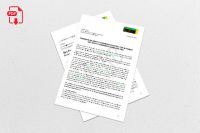Why Should You Hire Persons With Disabilities?

On 24 November, MCRB held its first transcontinental webinar, the first of a two-part webinar series organised together with the Israel embassy in Myanmar, Myanmar Israel Chamber of Commerce, and leading disability rights organization Access Israel.
The webinar was attended by 85 participants, most of whom represented small-to-medium sized Myanmar companies and disability rights organisations. All in all, the webinar was a great success, with simultaneous captioning provided by Verbit, and the appropriately chosen ‘(I Did it) My Way' song interlude by Israeli musician Nir Brand, interpreted by a sign language interpreter in Burmese. A special thanks to Daw Pyone Kathy Naing, Pyithu Hluttaw MP for Kalaw for joining us, and highlighting the Myanmar government’s commitment to equal rights for persons with disabilities.
The webinar built on MCRB’s work on disability inclusion by business and in the workplace, including the Handbook for Employing Persons with Disabilities, which was published in December 2018 with the Ministry of Social Welfare, the Myanmar Federation of Persons with Disabilities and AAR Japan, and two multistakeholder forums in November 2017 and March 2019. The webinar also drew on Access Israel’s extensive work in Israel and internationally, including with the Valuable 500 coalition and its series of international webinars joined by experts worldwide, some of whom were speakers for this first Myanmar-focussed webinar.
Keynote speaker Caroline Casey, Founder of The Valuable 500 gave an inspirational speech in which the business case for employing persons with disabilities was highlighted inter alia by sharing some alarming figures. With 1.3 billion people in the world having a disability, 15% of the global population are directly affected. This makes up a global consumer base worth 8 trillion US dollars.
Following introductions by his Excellency the Ambassador of Myanmar to Israel, Mr Ronen Gil-Or and Director of MCRB, Ms. Vicky Bowman, Michal Ramon, CEO of Access Israel explained the current situation for the employment of persons with disabilities in Israel. She shared that in Israel it is mandatory for service providers to conduct accessibility trainings on an annual basis and that there are penalties for those who do not comply. This is relevant to Myanmar, as it is currently being decided whether or not it will take on quotas - for which MCRB has facilitated ongoing discussions about whether Myanmar should introduce a compulsory employment quota for persons with disabilities. Michal emphasized that the main obstacles in Israel, similar to Myanmar, is social stigma, lack of infrastructure (especially in ‘older’ cities) and a low government budget on improving accessibility and inclusion.
Lastly, a panel discussion was moderated by Dr Sai Kyi Zin Soe, secretary of research sub-committee for the national committee of the rights of persons with disabilities, chaired by the vice president of Myanmar, and included Aung Chit Khin, Founder and CEO of Strategy First University, and Htun Htun Naing, Founder and CEO of Blue Ocean Investment, the largest calling centre in Myanmar. Both panelists shared encouraging examples of how they are promoting inclusive employment and what incentivized them to do so. Aung Chit Khin shared Strategy First’s interest in making its educational content more accessible and inclusive, while U Htun Htun Naing explained the importance of looking beyond stigma and measuring potential employees’ only according to their work ethics. Finally, a presentation was provided by Iris Kiryati-Moyal of Intel Israel, one of the leading companies in driving diverse talent and inclusive cultures in Israel, sharing some of the company’s best practices.
Read also
- Video on Disability from I Am Me
- Handbook for Employers on Employing Persons with Disabilities in Myanmar
- MCRB Promotes the Third Networking Event by MSMEs Led/Involved by Persons With Disabilities
- Bringing Assistive Technologies for B2C Services to Myanmar
- Discussing ‘Dignity By Design’ in Myanmar’s Built Environment
 English
English မြန်မာ
မြန်မာ မြန်မာ (unicode)
မြန်မာ (unicode)








